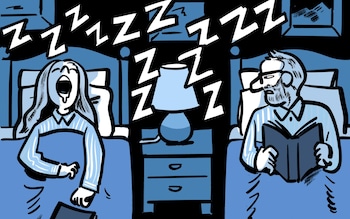A refreshing pint on a warm day is part of British culture. A pint after work on a Friday is, as TV pundit Tom Skinner described: “a basic human right”.
You wouldn’t think it when you walk past packed pub gardens, but beer sales in the UK have declined in the past five years. They’re down one billion litres last year from 4.8 billion in 2018, according to Statista. The cause? A triple whammy of Brexit, the pandemic, and inflation. Today, the cost of a pint is more expensive than ever.
But our love of beer is bouncing back. Sales are increasing and are projected to rise over the next three years with a trend towards premium brands. It remains the tipple of choice for the UK’s drinkers, with a 2023 report by The Grocer placing Stella Artois as the top alcohol brand in the UK with other beer brands in the top five.
Drinking too much beer can lead to chronic disease but there is a fine line between low to moderate beer supping, with some studies suggesting tentatively that it might have mild health benefits.
We ask Telegraph nutritionist Sam Rice how different beers stack up nutritionally.
The 1920s slogan ‘Guinness is good for you’ gave the black stuff a reputation for being healthy which endures to this day. There’s not a huge amount to back up the claim, although Guinness does contain a small amount of iron (0.3g per can, 3% of the recommended daily amount) and some cancer-preventative antioxidants from the barley and hops. It’s also relatively low in alcohol, calories and sugar compared to our other picks.
The UK’s number one lager, the main advantage here is the lower ABV, calorie and sugar content. There’s little else to recommend this beer nutritionally, but it’s not a bad pick if your main concern is damage limitation.
IPA, or India Pale Ale, is a style of beer made with more hops than regular beers, and so generally they contain a higher level of anti-inflammatory plant polyphenols. Unfortunately, they also tend to have a higher alcohol, sugar and calorie content so this may negate any potential upsides.
Another pale ale here, which indicates a heavy presence of hops and the associated health benefits. Where this beer might just have the edge over the other pale ales in this list is the ABV, 4% is significantly lower than the Brewdog Punk IPA.
Old Speckled Hen is an English Pale Ale which is another style of ‘hop-forward’ beer. According to studies, the plant chemical humulone found in hops strongly inhibits bone resorption which may help counteract osteoporosis. This beer also performs pretty well in terms of calories and sugar.
Leffe is an Abbey beer, brewed in the style of the Belgian Trappist monks, these beers are unfiltered and contain high concentrations of silicon. Silicon plays an essential role in bone mineral density and can help guard against osteoporosis. However, with the highest ABV and calorie content of this selection, restraint is key.
Traditional Belgian wheat beers like Hoegaarden stand out from the crowd because they undergo a second fermentation in bottle, producing live microbes that are potentially beneficial for gut health. They sit in the middle ground for ABV and calories, but are surprisingly low in sugar.
What happens when you drink daily?
There is evidence that low level alcohol use can provide some protection from cardiovascular disease. The bad news is that it also increases the risk of cancer. Studies conclude that one or two drinks three times a week are safe, with ‘minimum risk for all-cause mortality’.
However, three or four pints a night (around six to eight units a day) moves you ‘along the path to dependency’ according to Dr Sally Marlow, professor of practice in public understanding of mental health research at King’s College London. At this level, beer, and specifically the alcohol in it, can lead to: fatty liver alcoholic liver disease, sclerosis of the liver, brain damage, digestion problems, cancers, circulation problems, obesity, sexual dysfunction and a range of other health problems.
One of the main factors is acetaldehyde, a toxin and carcinogen which is created when alcohol is broken down in the liver.
According to a study published by the University of Oxford and Peking University last year, alcohol consumption increases the risks of over 60 diseases.
Professor David Nutt, from the faculty of medicine and Imperial College also explains the sobering effects of excessive alcohol consumption.
“It is poisonous to all cells in the body. It increases the risk of mouth cancer. It’s poisoning your gullet, and your stomach. Then it goes into the liver where it increases the risk of cirrhosis. It will start to damage nerves and muscle cells in your heart. And then it gets to your brain where it turns on the neurochemicals which underlie craving and loss of control and hangover,” he says.
Professor Nutt does provide some relief for beer drinkers, however.
“If you stick to the 14 unit a week guideline, there’s very relatively little problem in the long term,” he says. “I estimate that 14 units a week may take about a third of a year off your life.”
Bitter or lager?
Beers fall into two categories: ales and lagers. Factors like the yeast used, the brewing temperature and time all result in differences in alcoholic strength, taste, and polyphenol content.
Hops, one of the key ingredients in beer, contain phytoestrogens, plant molecules that mimic some of the effects of the female hormone oestrogen in your body.
While it is often thought that ale is better than lager there are too many factors which influence the chemical make-up of individual beers to definitively say one is better than the other.
“It depends how the drink is put together,” concludes Mellor.

How does beer affect sleep?
Beer, and more precisely the alcohol in it, is paradoxically a sedative that disrupts sleep. It relaxes initially but when the sedative effects wear off, typically after three or four hours, several processes then disrupt sleep.
It relaxes the muscles and tissues in the soft palate, throat and back of the tongue, leading to increased snoring and sleep apnoea. The volume of liquid consumed by heavy beer drinkers will also generally lead to more trips to the toilet during the night.
Drinkers can also experience withdrawal symptoms as the effects of the alcohol wears off. One study suggests that men are more affected than women. The 2015 research showed ‘significant correlations’ between alcohol use and sleep quality, sleep duration, and sleep disturbances in men.
Prof Marlow explains that excessive alcohol consumption can also have significant psychological impacts during the night.
“People talk about experiencing fear and anxiety and dread that comes in the wee small hours,” she says. “Alcohol can amplify negative emotions.”
How does beer affect weight?
Typically a beer belly is a tight, solid, bulging stomach, where the excess fat is stored in the body cavity around the internal organs as visceral fat. This body shape is linked to an increased risk of heart attack, stroke, diabetes, and several cancers because visceral fat also causes inflammation.
Despite the name, beer is not specifically responsible for its namesake belly, with one 2003 study in the Czech Republic even concluding that ‘it is unlikely that beer intake is associated with a largely increased waist to hip ratio or BMI’.
However, beer is packed with calories and excess calories are stored as fat.
Duane Mellor, dietitian, and spokesperson for the British Dietetic Association (BDA) says: “Depending on the strength, beer can be anything from 170 to 300 calories per pint. A pint of Guinness 4% ABV is 200 calories with about four and a half teaspoons of sugar in it. A pint of 5% bitter has around 17g and 240 calories. Pilsners are lower as they tend to brew out the sugars.
“Beer is fat free, but that’s irrelevant because our bodies aren’t great at regulating liquid calories and those extra calories, if they’re not used, get laid down as fat somewhere.”
Even low alcohol beers can still contain around 12g of sugar per pint.
“So four pints of low alcohol beer will still reach your recommended daily amount of free sugar, and that’s before you start eating,” adds Mellor.
Four pints of beer topped off with an Indian meal of chicken tikka masala, pilau rice, naan bread and onion bhaji, high saturated fats, can easily add up to over 2,000 calories.
How does beer affect digestion?
Alcohol is an irritant which can cause inflammation of the lining of the stomach. There is also evidence that alcohol can disrupt the gut biome.
However, in recent years some research suggests that certain beers could help improve the diversity of species in the gut microbiome, something which tends to be associated with health benefits. A 2022 study in the Journal of Agricultural and Food Chemistry followed 22 men who drank a little more than half a pint of beer every day for four weeks and found that they subsequently had better markers of intestinal health.
How does beer affect hydration?
Alcohol is a diuretic, which means it exacerbates water loss through urine. It does this by inhibiting the production of a hormone called vasopressin, which plays a large role in the regulation of water excretion. Therefore, if you do not drink enough water, but consume large amounts of alcohol, you are likely to become dehydrated.
There is a caveat, however. Some experts believe that as beer contains some electrolytes and has a high water content, it can be useful for hydration if it is low alcohol or alcohol free. Indeed, one 2015 study into the effects of a moderate intake of beer on hydration after exercise in the heat concluded that a moderate beer intake ‘has no deleterious effects on markers of hydration in active individuals’.
Regular beer consumption and chronic conditions
Studies consistently link alcohol consumption with the development of several chronic disorders, such as cancer, cardiovascular diseases, diabetes and obesity. Light to moderate drinking tends to lower risks of certain diseases, while heavy drinking tends to increase the risks. Genes, hormones and lifestyle factors such as smoking and diet can modify the association. Alcohol strength by volume is the determining factor in most cases, and beverage types could also have an influence.
A 2016 review of research into the links between alcohol and chronic diseases identified ‘significantly higher risks for cancer, cardiovascular diseases, diabetes and obesity’ for heavy drinkers’.
Good news for beer drinkers?
While experts agree that there are no health benefits to alcohol, drinking low to moderate amounts of lower alcohol beer, two or three days a week with several days non-drinking in between is generally safe.
Prof Nutt explains: “Beer drinkers seem to have less harm for the same intake of alcohol than wine or spirit drinkers. This is probably because beer has vitamins and other relatively healthy things in it, whereas vodka has got nothing healthy in it at all, and wine has got less of those healthy compounds. It might also be that you can’t really binge on beer because of the volume of liquid.”
Beer has been linked to improved bone density although Mellor explains that this might be because beer drinkers tend to be heavier, “so loading on the bones will increase bone density”.
Brewed and fermented products contain beneficial bioactive compounds, which theoretically might be good for gut health, adds Mellor. “But you need to watch the alcohol content because you could undo all the benefits.”
Interestingly, for this reason one brand of German wheat beer, Erdinger, markets its alcohol free variety as a sports drink as it contains electrolytes, modest sugar, folic acid and vitamin B12.
Meanwhile, a 2015 study reported that light to moderate beer drinking (12.5–25 g/day) could improve the function of blood vessels because of the beneficial compounds found in beer.
A study looking at various animal and human experiments acknowledges that purported health benefits of alcohol “are controversial”, but says sensible consumption has a “positive effect on the regulation of human immune function”.
Price and quality of beer bear no relation to whether it is better or worse for you, as Marlow explains.
“The bottom line is the volume of alcohol. People may tell themselves that it’s okay, they’re drinking a craft beer. It’ll be fine. But lots of those craft beers have high alcohol volume as well.”
Disclaimer: The copyright of this article belongs to the original author. Reposting this article is solely for the purpose of information dissemination and does not constitute any investment advice. If there is any infringement, please contact us immediately. We will make corrections or deletions as necessary. Thank you.



